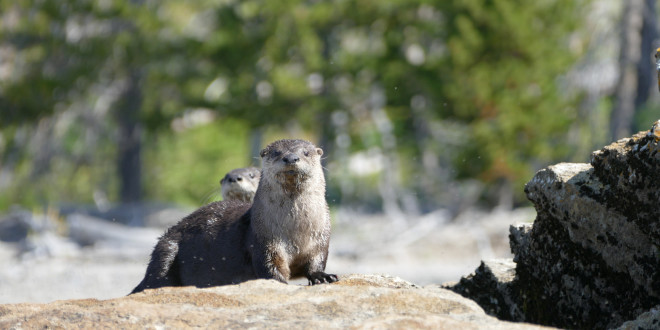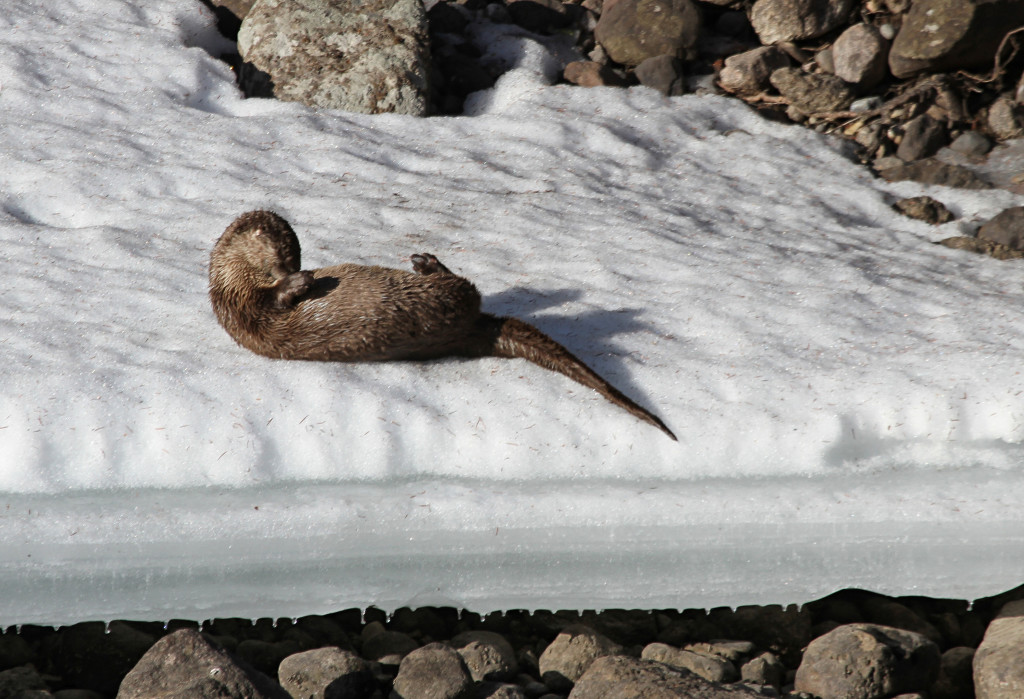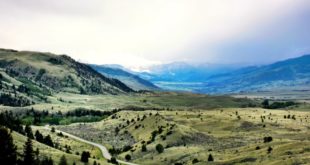Few animals (in Yellowstone National Park or elsewhere) seem to embody fun the way river otters do.
River otters are a perennial delight for children at the zoo, for instance, ducking and diving, twirling through the water like corkscrews—or vortices in motion.
On the whole though, Yellowstone is not known for its river otters. Part of the issue comes from the fact that, outside the zoo, they’re elusive creatures. They don’t wander near established Park infrastructure the way bison, elk, and other mammals do. They’re slippery creatures.
Nonetheless, if you have a chance to river otters in Yellowstone, you may find yourself a bit intoxicated by the level of fun they seem to be having.
Basic Facts
- Scientific name: Lutra canadensis.
- Synonymous with Lontra canadensis or North American river otter.
- Can be 40-54 inches long.
- Weighs 10-30 pounds, with a third of their weight in their tail.
- Belongs to the weasel family (Mustelidae).
- Most aquatic member of weasel family.
Habitat
- Always found near water.
- In Yellowstone, often found near confluences of rivers or fast flowing streams, like the Gibbon River and Lamar River, or in places such as Trout Lake.
- Don’t hibernate, but live year round in chosen habitat.
- Not known to live in exclusive territories.
Diet
- Feed on crayfish and fish.
- Will sometimes feed on frogs, turtles, and even young muskrats or beavers.
Behavior
- Seen active throughout day, although river otters are by nature crepuscular i.e. they prefer to be active around twilight.
- Spend most of the day in underground dens near the water.
- Known to move long distances between water bodies.
- Prefer water or ice travel to land travel.
Reproduction
- Breed late March through April.
- Yearly litters generally include two to four young.
Groups
- Otter families can include adult male and female, plus litter.
- Females generally dominate family groups.
- Bachelor males known to live in groups of up to 10.
- Females and offspring remain together for most of year preceding next litter.
- Some females and offspring join other families for a short period of time.
All Fun and Games
- River otters have been observed having fun alone and in groups.
- Merriment includes jumping, diving, swimming in circles, wrestling, and playing catch and release.
- Playing, alone or in groups, seems to sharpen memory and strengthen social bonds.
Going Swimmingly
- River otters are built for water.
- Begin swimming two months after birth.
- Evolutionary enhancements amenable to swimming include their sleek, cylindrical body; tapered tail, webbed feet, and short claws.
- Body shape and head size cuts down on resistance while swimming.
- Ears and nostrils will close underwater.
- Whiskers function as prey detectors.
- Can swim up to six miles per hour while underwater, for up to three minutes.
 Yellowstone Insider Your Complete Guide to America's First National Park
Yellowstone Insider Your Complete Guide to America's First National Park







You must be logged in to post a comment.